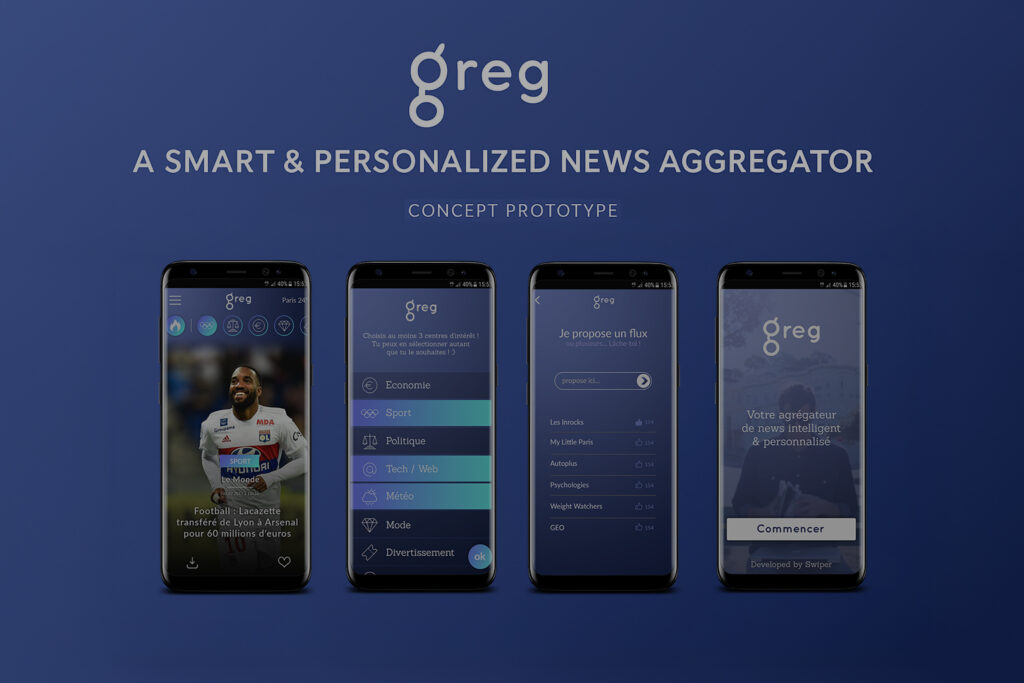Greg: News aggregator

Problem to Solve
By 2017, users were already overwhelmed by scattered news sources across apps, websites, newsletters, and social media. The need for a centralized, customizable, and distraction-free space to consume trusted news had become clear.
How might we help users keep up with the topics they care about, without the noise?
Hypothesis
If we provide a clean, mobile-first interface where users can:
- choose their favorite topics and sources,
- receive relevant alerts,
- and save/read content later,
then they’ll spend more time reading curated news, with less friction and more control.
Approach and Feature Set
We designed and prototyped Greg around simplicity, personalization, and engagement. Here’s what the first version included:
1. User onboarding
- Choose 3+ interests from a list (e.g. politics, tech, sports)
- Select trusted media sources (Le Monde, L’Obs, Les Echos…)
2. Personal news feed
- A visual, card-based UI displaying latest articles by theme
- Each card showing the article source, title, and category
3. Alerts and preferences
- Settings for night mode, sound, vibrations
- Topic-specific push alerts via “Eclipse” notifications
4. In-app content management
- Save articles for later reading
- Auto-delete logic after a selected duration (e.g. 1 week)
- Tab to switch between read vs saved
5. User contribution
- “Propose a feed” feature: users could suggest new outlets or media to follow, creating a community-driven evolution of the platform
Design Choices
- A calm gradient blue background with minimalist fonts to reduce cognitive load
- Icon-based navigation for fast access to key actions
- Light gamification cues (like toggles and confirmation animations) to make the app feel responsive
- Horizontal category navigation for content filtering (home screen)
Why It Was Never Released
Despite an elegant MVP and a fluid UX, Greg never made it to market due to strategic shifts in Swiper’s roadmap. The business eventually pivoted toward monetized lock-screen interactions and B2B gamified entertainment.
Some reasons:
- Market saturation: competition from apps like Flipboard, Feedly, and Google News was already high
- No sustainable business model at the time (no clear monetization path)
- The team decided to focus on ad-based formats better aligned with Swiper’s core technology
Takeaways
- Greg was a polished and well-scoped MVP that demonstrated strong design thinking and user-centric logic.
- Although the app wasn’t launched, it helped validate early UX patterns and contributed to the team’s product culture.
- Key learnings around onboarding flows, notification logic, and content curation design were later reused in other Swiper products.